
Words & Photos by Hank DeVos
Hydration
 Hydration is an interesting topic; there are lots of conflicting ideas on what you should do. Drink every 15 minutes! Only drink when you are thirsty! Consume 8 glasses of water a day!
Hydration is an interesting topic; there are lots of conflicting ideas on what you should do. Drink every 15 minutes! Only drink when you are thirsty! Consume 8 glasses of water a day!
It can get confusing and frustrating. The gist of it is, if you are sweating during activity, then you’ll need to replace those lost fluids at some point. Myself as an example; I sweat a lot doing pretty much everything, so I need to be pretty vigilant about drinking water during and after the activity I am doing.
Where hydration really gets important is when you are doing endurance sports and going for long time frames. On a 25 min run/bike I wouldn’t even worry about drinking water or carrying it with me, it’s short enough that it won’t impact my workout. Anything beyond an hour though I start to drink at regular intervals.
Electrolyte Replacement
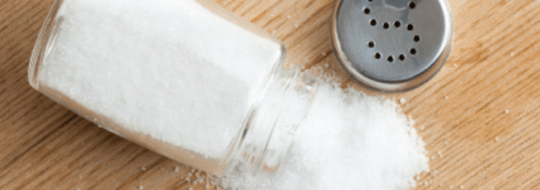
When we talk about hydration and endurance sports, it gets lumped together with electrolyte replacement because they go hand in hand. Through trial and error (much error on my part) I discovered that I need to be replacing my base salt every 30 minutes. Sodium is the big electrolyte that most people know, but that also includes Magnesium, Calcium, and Potassium. Potassium is especially important for your muscles as it helps regulate and control muscle contractions.
If you’ve ever had a muscle cramp in the middle of a long workout or at the end, it can likely be attributed to low electrolytes. The first marathon I ran, I found out the hard way that I needed to have an electrolyte replacement plan ON TOP of my glucose/fuel plan.
Currently what I will do is take salt capsule every 30 min along with Gatorade. The brand I use is called SaltStick, but there are plenty of others: E-Load, GU etc.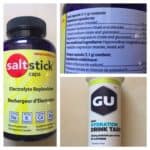
Those capsules have 215mg of Sodium, 63mg Potassium, 22mg Calcium and 11mg of Magnesium. Compared to a sports drink like Gatorade that has 110mg of sodium and 30mg of potassium.
As I said I sweat a lot so I lose a lot during a long workout, but if you’re a modest sweater, another decent option (again from SaltStick) are the chewable tabs. They have 1/4 what the capsules do, but you can always just pop a few more in if needed.
E-Load and GU both are brands that you drop into your water bottle and are great to use if you don’t want to think about it on top of drinking; it’s already in your water then. Keep in mind these also have much lower quantities than the capsules do.
I’ll link to different brands below, but this is personal preference and trial and error. I know myself, and I know I need to be contentious every 30 min but that will differ from others.
Nutrition
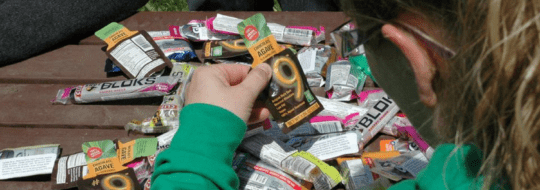
Just like hydration this a trial and error kind of deal. When we talk about nutrition on endurance activities we are talking about what you are using to refuel during your workout and not what kind of meals you are eating on a regular basis.
It took me a while and lot of eating to settle on PowerBar’s performance energy bar. The reasons I like it, it has a lot of carbs and almost no fibre, and is very thin, and chewy. I can stuff 4 of these in my bike jersey and be good for a 5 hour bike ride. Other bars I’ve tried, especially chocolate ones, melt and can start tasting very gross very quickly.
I would try and eat at least a bar every hour. I went by a 45-60 carb rule per hour as far as feeling is concerned. Depending on your output you may need more or less it’s a balance.
The other option I would highly recommend is Honey Stinger waffles. They taste 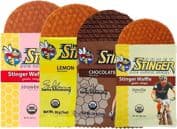 great, are small and compact and don’t upset my stomach.
great, are small and compact and don’t upset my stomach.
There are tons of other brands out there for nutritional needs, Gu Energy gels (also decent), sports beans.. heck even a bag of jelly beans can work.
Another option that I’d use was Clif bar. But I found clif bars to be little too dense and required me to drink to really get them down. Instead I’d use Clif Bloks; easy to chew and basically just pure glucose.
It’s really all about finding what you can stomach (literally) and what will help give sustain you through long endurance workouts.
The only way to figure out what works is to try different things. It’s a slow process but worth the effort in the end.
Diabetes
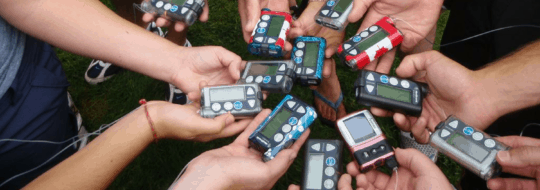 Like learning about hydration and nutrition; figuring out my diabetes regime was a lot of trial and error as well.
Like learning about hydration and nutrition; figuring out my diabetes regime was a lot of trial and error as well.
Hydration is key to having all things functioning properly and it’s especially true if you’re blood sugar is high. One of the ways I would keep myself from going low over the course of my rides was to use regular Gatorade. I would put on a temp basal on my pump of 65% and use Gatorade as a way to take in a little glucose, almost like a basal of glucose. Combined with 2 other water bottles of water I wouldn’t have to eat as much solid food.
My blood sugars during long rides/runs were usually pretty steady; I’d average quite consistently around 7.0 mmol using this strategy.
Before I’d start my rides, my blood sugar would generally be around 11 or 12 (intentionally) and after about 20-25 minutes of riding, my levels would even out. I’d go intentionally high, so I would get a predictable drop. If I would start with a lower BG, things were a bit of crap shoot; sometimes I’d plummet and go low 15 minutes in… other times I’d be fine.
The only problems I really had were after my long workouts I would consistently spike up, but NOT in a consistent timeframe. Sometimes right after, other times 2 hours later. It was frustrating and something I never fully figured out.
I was lucky enough to train with a Dexcom and could quickly check my BGs at a tap. One thing I did find was that my Dexcom would tell me I was low when I’d really be riding around 6.0, but this only seemed to happen when I’d have a flat line for hours on end. Not a complaint, but an observation.
It’s very much a trial and error scenario again here; the other factor to consider: if you are training for something rather than just casually going for long runs/rides. As you get in better shape, your insulin needs WILL change. I had to drop my overall basal by several units a few months into my schedule. Something to keep in mind as your body changes and adapts.
I always packed more glucose than I would ever need anytime I went out, especially if I was riding alone. Better to have extra than not enough.
Regardless of what I did, to really understand how you’ll react and what you need to do you just need to get out there and do it.
Get out there and try some stuff out!
About Hank DeVos
 Hank DeVos is an award-winning filmmaker, ironman athlete, and as he would say, “pretty damn good skier.” He was diagnosed with Type 1 in 1993, he totally has everything figured out.
Hank DeVos is an award-winning filmmaker, ironman athlete, and as he would say, “pretty damn good skier.” He was diagnosed with Type 1 in 1993, he totally has everything figured out.




